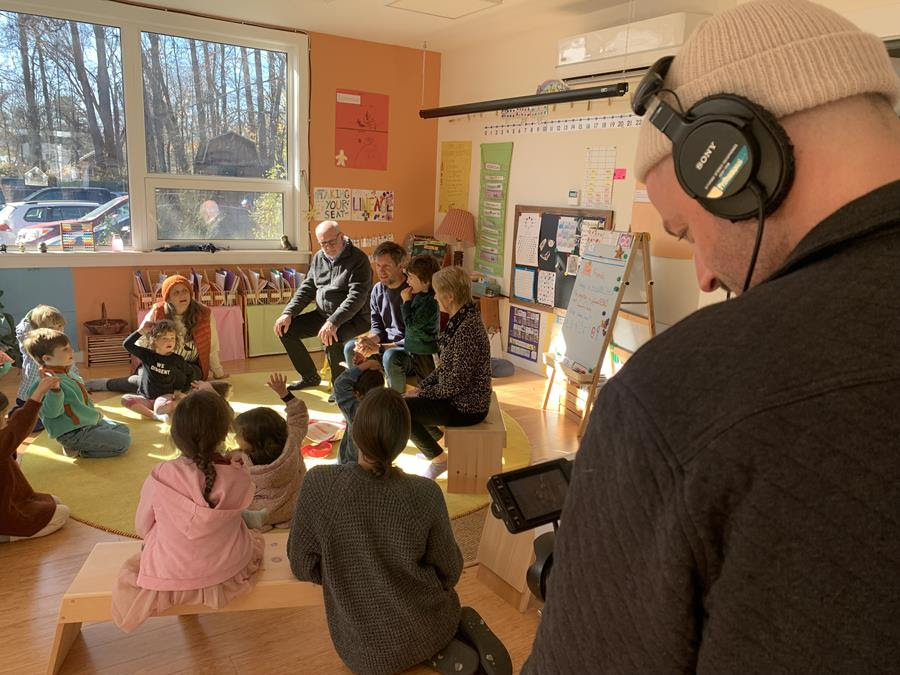
Mind Matters
Lhomon Education
Continuing our series “Bodhi Seeds,” we asked representatives from education programs and schools that Khyentse Foundation supports to respond to quotes by Dzongsar Khyentse Rinpoche about education. This second issue features Lhomon Education, a 4-year program for young monks under Chökyi Gyatso Institute in Dewathang, Bhutan. Currently, 70 monks aged 8 to 17 are enrolled in the program, which integrates Buddhist principles, values, and wisdom into mainstream academic learning. In 2022, Lhomon expanded its outreach to include young people, parents, and teachers from both the local community and other regions in Bhutan.

Continuing our series “Bodhi Seeds,” we asked representatives from education programs and schools that Khyentse Foundation supports to respond to quotes by Dzongsar Khyentse Rinpoche about education. This second issue features Lhomon Education, a 4-year program for young monks under Chökyi Gyatso Institute in Dewathang, Bhutan. Currently, 70 monks aged 8 to 17 are enrolled in the program, which integrates Buddhist principles, values, and wisdom into mainstream academic learning. In 2022, Lhomon expanded its outreach to include young people, parents, and teachers from both the local community and other regions in Bhutan.
Maybe there’s a way, even from a very young time, we can teach our kids, ‘You have something called “mind.”’ As much as it sounds very sort of profound, enigmatic, it’s not. — Dzongsar Khyentse Rinpoche
Lhomon Education (LME), guided by Dzongsar Khyentse Rinpoche’s vision, is an educational initiative committed to integrating the core teachings of the Buddha into all aspects of learning. These teachings, which revolve around interdependence, impermanence, wisdom, kindness, and compassion, permeate every activity we facilitate for students, as well as the programs we organize for teachers and the community. A central theme that runs through all these activities is the exploration of the mind.

At LME, we place a conscious emphasis on the importance of the mind and actively incorporate its study into our curriculum, wakefulness retreat, youth engagement initiatives, contemplation practices, and social activities. Our teaching approach revolves around the question “Do you have something called ‘mind?” This question plays a vital role in our approach as it prompts individuals to engage in self-questioning and self-reflection, gradually helping them recognize the existence of the intangible yet powerful phenomenon called “the mind.”

In fact, expressions about the mind (sem in both the Dzongkha and Sharchop languages used in Bhutan) are prevalent in the daily language and social interactions of Bhutanese culture. For instance, phrases like rok sem lekpu cha (meaning “he or she has a good mind”), jang sem lekpa (“my mind is happy”), and jang sem shewa (“my mind is sad”) acknowledge the existence of the mind, making it somewhat easier for us to relate when discussing and exploring our own minds.

Building upon this foundation, we introduce another thought-provoking question—“Where is the mind?” This often perplexes students, with some pointing to their heart, nose, or brain. In response, we investigate more deeply by asking analytical questions like, “Precisely where within the heart is the mind?” We explore characteristics such as color and various attributes associated with the mind. As the session progresses, however, students find themselves unable to arrive at a definitive conclusion.
Then, our attention shifts to an exploration of emotions, awareness, and sensations by asking questions like, “Do you feel sad, happy, or angry?” “Do you feel a desire to play football or go somewhere?” “Do you constantly see and hear things? Are you aware of your surroundings?” Or “Do you feel hungry or maybe itchy?” We encourage students to reflect on and discuss where emotions, feelings, and sensations come from, and eventually conclude that they are simply different aspects of our mind. In addition, we emphasize that the mind is not confined to one individual (you) but exists in all beings. This allows us to recognize that others may have different emotions and feelings and the importance of respecting a variety of perspectives and views.

We often encounter diverse opinions in the classroom, with students strongly attached to their own ideas. They may not respect others’ views and end up engaging in heated debates. In such instances, we promptly initiate a discussion about the mind and allowing for differences in perspective. We have observed a gradual shift as a result, with students growing more inclined to recognize and value the viewpoints of others.
To help them become more aware of their feelings, emotions, and sensations, we also guide students through simple activities. These include creating art with awareness, watching the breath, eating wakefully, gazing at images with awareness, practicing walking meditation, and observing feelings and sensations. Before beginning each of these practices, we establish a positive intention and selfless motivation by taking refuge and cultivating bodhichitta. This framework is deeply rooted in Buddhist practices and holds great significance for us. We consider it not just a preliminary step, but also a practice and topic of discussion rooted in the larger context of our mind. Through these activities we emphasize the importance of contemplation, cultivating awareness as a fundamental aspect of our mind, and being constantly aware of our experiences.

For our youngest, “pre-foundation” students (aged 8 to 12) we organized a fun painting activity where we encouraged them to express their own ideas about the mind. It is interesting to witness how children, given appropriate guidance, can express abstract concepts through the simple medium of art.
To explore the innate nature of our minds we use symbols, stories, and personal experiences. For instance, we examine the symbolism of the lotus flower, highlighting how it grows from muddy water without being affected by the dirt. Art is also incorporated effectively here. Storytelling engages both young and adult audiences. We utilize this powerful tool to share valuable insights about the mind, meditation, and intentions and their significance. Sharing personal experiences enables students to establish a connection with their own mind and how it manifests in daily life. Here, we pose simple questions like, “Have you ever thought twice about harming an ant?” Or “Have you felt the urge to give, even when you had nothing to offer?” Through such questions we facilitate introspection and contemplation, leading to the understanding that we all have basic goodness.

Simplifying abstract concepts like the mind and emotions is certainly a challenge. The general lack of education on the subject can result in confusion; for example, students may mistakenly equate the mind with a soul. Material distractions both inside and outside the classroom compound the issue.
Maybe there’s a way, even from a very young time, we can teach our kids, ‘You have something called “mind.”’ As much as it sounds very sort of profound, enigmatic, it’s not. We do have mind, but many times we take this for granted. We tell them, ‘You have a mind—do you, or not?’ And then you tell them, ‘This mind is very powerful. This is the mind that you get sad, you miss your mum, you want to play, you want your toys—it’s this mind that’s doing it.’ And then also teach, ‘It’s not only you who has mind, others also have, and what they think, value, like, and dislike is not always similar to you.’ Somehow if we can sort of put that in there—empathy. And then I guess you can talk about, ‘It’s how you think, it’s how you perceive. That’s how you hear, this is how you have heard, imagine, project … The other one does not necessarily project like that.’ … I think this is the foundation for making ourselves forgiving, compassionate, kind, resilient … probably also the foundation for emotional intelligence.
— Dzongsar Khyentse Rinpoche

While it is difficult to properly measure the impact of education about the mind, our outreach initiatives over the last couple of years have yielded some positive outcomes. Many program participants have initiated discussions about the mind with their students and family members. An example of this impact can be observed in the introduction of meditation practices to hundreds of students in regular schools.
In short, with Rinpoche’s guidance, LME is striving to redefine education. By placing the mind at the centre of learning, we hope to make a positive impact on the world.
All photos courtesy Lhomon Education.




